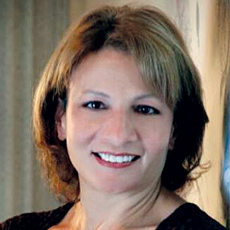
My 89-year-old mother recently spent time in the hospital, and the outcome was uncertain. Prior level of function: independent with ADLs, independent with ambulation without assistive device, independent with stairs, driving, living alone, no falls. Pretty great, right?
Being in the hospital changed everything and we didn’t know how this would resolve.
Once she was stabilized it became clear that she wouldn’t be able to resume her prior level of function due to multiple aspects of decline. She couldn’t even sit up without maximum assistance. Soon discharge options started coming in. A SNF was at the top of the list, but which one was the right one?
Post-acute care has become the default for about 40% of the geriatric population once they leave the hospital. That includes inpatient rehab facilities and skilled nursing facilities. Most use SNFs or home care. Despite the reasons for the hospitalization, whether the diagnosis resolves or not, the elderly person who discharges from the hospital is in worse functional shape than they were when they entered. In what other place will one spend 90% of their time in bed? A 40-year-old who lies in bed for a week will have significant atrophy, significant balance issues, and decreased vital capacity.
Consider the same for the 90-year-old. For every day in the hospital, it typically takes a week of rehab to regain what was lost. Seven days in the hospital = seven weeks of rehab. A 2021 study of post-hospital elderly patients attempted to predict the functional decline of individuals 70 and over, and recovery was not just linked to the diagnosis.
The predictors of decline were:
1. Previous hospitalizations
2. Access to social support
3. Cognitive deficit
4. Restraints
5. Not having a partner
6. Medical diagnosis
Asking the previously-independent geriatric patient where they want to go for short-term or long-term care (not whether they want to go), stirs up memories of friends and relatives who were treated or mistreated in similar facilities. The dread among this population is real because their experiences may be from 50 years ago, when our shiny, person-centered facilities didn’t yet exist.
As recently as the 1990s, I worked in a facility that had unpainted cinder-block walls, no a/c, sticky floors and patients restrained in immobile chairs in various states of undress. The nightmares that these facilities engender are hard to shake. We know that our facilities don’t look and feel like that anymore, but not everyone does. Asking an able-bodied 80-year-old to leave the hospital to go to something like that, feels like a death sentence.
I once worked in an elegant, well-appointed facility with a 60-bed dementia unit that had window boxes at the doors with personal memorabilia, specific activities individualized for each resident and special “quiet time” from 4:00 to 6:00 pm. It was the best system I’ve ever seen. Yet residents and their families from the other units were terrified of it, and called it the “Snake Pit”, with stories about the abuse and screaming they “heard about” that never happened.
As the pandemic becomes endemic, it’s in our best interests to open our doors and get our independent-living elderly patients into our buildings to see what we offer. It can be Lunch-and-Learn sessions, bingo, movies or anything that involves groups of area elderly and their decision-making children. Opening the doors to familiarize people with your building can make all the difference.
Happy Ending: Mom chose a SNF she liked (her friend lives there) but recovered quickly and went home with home care. She’s back to independent, back to driving and back to life. The option remains but moving from the hospital to the SNF doesn’t have to be scary and shouldn’t face resistance. Let people see what you offer. Let people who are facing elective surgery have a tour of your building, so they know what to expect. Decrease fear and resistance with familiarity. Our SNFs are frequently the best option for getting back to life.
Jean Wendland Porter, PT, CCI, WCC, CKTP, CDP, TWD, is the regional director of therapy operations at Diversified Health Partners in Ohio.
The opinions expressed in McKnight’s Long-Term Care News guest submissions are the author’s and are not necessarily those of McKnight’s Long-Term Care News or its editors.





